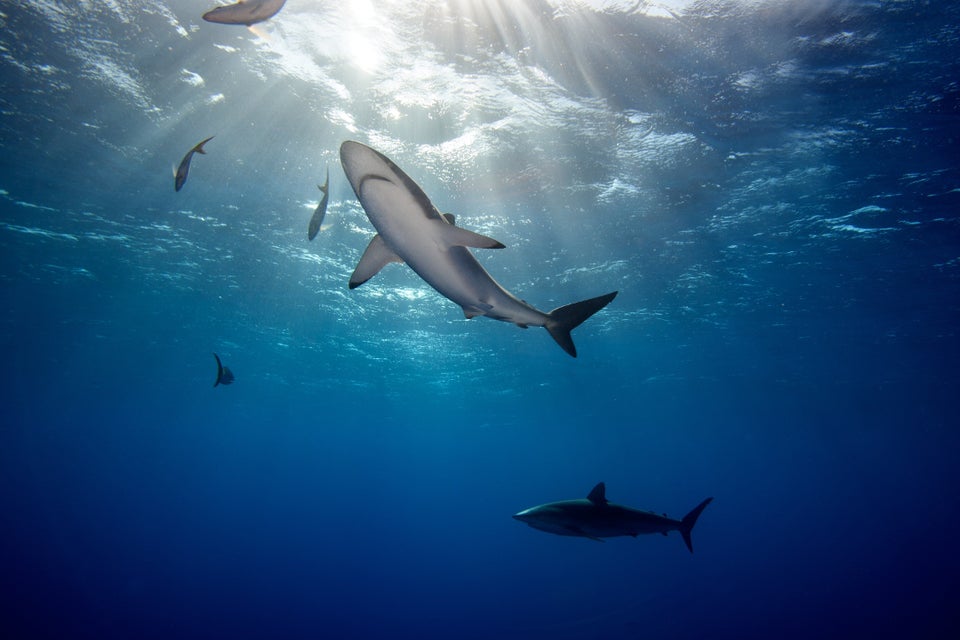Sharks are incredibly fascinating creatures. Wouldn't it be cool to see what they see?
Well, researchers at the American Museum of Natural History have created a "shark-eye" camera that "simulates how the shark sees underwater." The impetus for this was the discovery of a group of shy sharks -- catsharks, specifically -- who produce a bright green biofluorescence that does something unique, says a new study published Monday in Scientific Reports.
The team noticed the sharks increase the contrast of their biofluorescent glowing pattern the deeper they travel underwater. The contrast makes them brighter, allowing the sharks to make themselves more visible to neighbors of the same species and possibly communicate with each other.
“We’ve already shown that catsharks are brightly fluorescent, and this work takes that research a step further, making the case that biofluorescence makes them easier to see by members of the same species,” John Sparks, a curator in the American Museum of Natural History’s Department of Ichthyology and a co-author of the study, said in a statement.
Biofluorescence is when molecules in the skin of an organism absorb the blue-hued wavelengths of visible light in the water and re-emit them as other colors. This is not to be confused with bioluminescence, which is where "the light itself is produced by the organism -- as it is via chemical reaction in fireflies."

Because a lot of what goes on underwater is invisible to the human eye, the goings-on within the biofluorescent universe aren't totally known. Using a technique called microspectrophotometry to determine how sharks’ eyes absorb light, the researchers discovered that sharks have long rod pigments to help them see in environments without a lot of light. They used this information to develop the special camera filter that simulates how light hits a shark’s eyes.
As study author David Gruber, an associate professor of biology at Baruch College and a research associate at the American Museum of Natural History, said in a statement: "What does all this newfound biofluorescence we are finding in the ocean mean?"
The short answer is that they're working on it, but Gruber wonders if "these animals [can] see other animals that are biofluorescing in the deep blue sea" and, if so, what way they're using it.
The researchers recently also made the first observation of biofluorescence in marine turtles.
Sparks said in a statement that all of these findings are "a big step toward a functional explanation for fluorescence in fishes.”
So, while we're not totally sure why these animals are glowing and gorgeous, we're certainly enjoying that they are.

